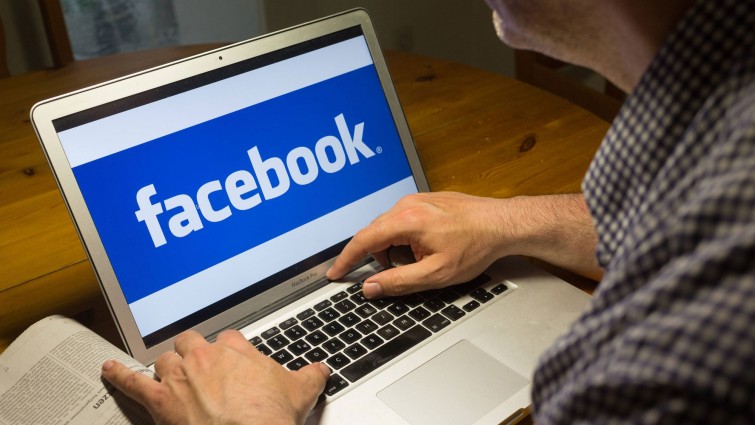The EU’s Radicalisation Awareness Network (RAN) brings together practitioners from around Europe working on the prevention of radicalisation. The aim of RAN’s Communication and Narratives (C&N) working group is to gather insights on both online and offline communication that 1.) offers alternatives to or 2.) counters extremist propaganda and/or challenges extremist ideas. The following is an edited and hyperlinked version of a RAN C&N Ex Post Paper arising from a workshop in Berlin on 10 – 11 December 2015.
Tips and Tricks from Google and Facebook for Online CVE
Counter- and alternative narratives can be used as preventative tools to offer individuals multiple/different perspectives on societal challenges. Internet and social media might be channels to plant seeds of doubt. These online efforts should go hand in hand with initiatives in the offline domain, for example by educating young people at schools about the consequences of violent extremism. And also the other way around; what is already happening offline can have a bigger online element.
Tips and Tricks for Campaigns Using Google/YouTube
- To enhance the effect of a campaign build a community network around it with possibilities to engage and interact. For example, link to a #twittersomething or Facebook and possibility to forward or like the campaign or the idea behind it.
- If you are using videos, they should be interesting without sound. Most people watch video’s without sound on their smartphone. Subtitles can help in this regard.
- Do not forget to use bloggers or vloggers, the can be a very strong voice on the internet.
- There is no need to produce HD professional videos; simple footage from a mobile phone could do the trick already.
- YouTube has trainings on video-skills for NGO’s and has special NGO grants to use on YouTube. Click HERE and HERE for more information and/or simply type ‘YouTube for NGO’s’ into your local Google search page and you’ll find more information.
Tips and Tricks for Campaigns Using Facebook
Facts About Facebook
- Facebook is used by 1 billion people daily and every day millions of pieces of content are shared.
- People check their newsfeed often (on average 15 times a day); for many people it is the first thing they do in the morning and the last thing they do before they go to sleep.
- Every newsfeed is different – people see the content that is relevant to them (because of the algorithm with over 100,000 criteria).
- Most of the posts and videos are viewed on smart phones (more than 65%).
Facebook commissioned Demos Centre for Analysis of Social Media to do research on what elements make counter speeches successful on their platform. The key findings of Demos’ 2015 research were that there are fewer counter speech pages than there are hateful pages, and that counter speech pages produce far less content. However, the counter speech content has a broader reach and more interactions per posts on average. In 2016, Demos produced a follow-up report examining how speech that challenges Islamist extremist narratives is produced and shared in different parts of the world. This comparative study includes data from France, the UK, Morocco, Tunisia, Indonesia, and India.
Facebook has the following best practice tips based on Demos’ 2015 findings:
- The form of speech: across all countries and groups studied, photos and videos are the best format to ensure a post reaches a wide audience.
- Type of content that work well:
- Timely content;
- Emotional content/storytelling (in this case longer posts can work) – example Humans of New York;
- Facts and numbers (easy to share) [ So-called ‘Islamic State’ have been producing infographics for quite a while now];
- Content with elements of surprise;
- Content with a strong opinion.
Regarding counter speech, the lessons learnt are:
- ‘Constructive counter speech’ was the most popular successful type of content;
- On the whole, satire and humour was the type of content that received the most interaction;
- Even neutral content was more likely to receive interactions than angry, attacking content.
- Use a wide range of voices to deliver your message effectively.
- Make your target group very specific.
- Your posting has to gain the attention of the people in a few seconds – when they are scrolling through their newsfeed. Because of Facebook’s algorithm (made up of 100,000 criteria), each newsfeed is different. Usually, within 30 – 60 minutes you will know if you content was a “success”. This enables testing of which target groups can be best addressed with which message.
- Keep posts simple to enable snowball effect: don’t post a lot of text (unless it is emotional content).
- Incorporate a clear call-to-action: be as concrete as possible.
- Upload videos directly to Facebook and use subtitles (because often people don’t play the sound).
- Find supporters with a big reach (e.g. Michele Obama’s #BringBackOurGirls). Use these people as influencers. Bring them to share your story within their network.
- Post at least 1 piece content per day.
- Use of Facebook advertising can help find your target group, e.g. you can target all people that have watched one of your videos to the end with a second ad.
For more information, see Building Your Presence with Facebook Pages: A Guide for Non-Profit Organizations.
EXIT-Germany’s Inspirational Campaigns
Nazis Against Nazis: Germany’s Most Involuntary Charity Walk
Inspirational campaigns to counter polarisation and extremism EXIT-Germany is an organization that helps people safely escape from extremist organisations (mostly the neo-Nazi scene). Over the years, they have launched several successful campaigns.
EXIT-Germany runs a network of formers neo-Nazis. In Germany many neo-Nazi marches take place throughout the country every year. In 2014, Exit Germany asked the inhabitants of Wunsiedel to turn the annual march held by neo-Nazis in this tiny German town into a clever fundraising campaign using the goose-steppers as unwitting participants in an “involuntary” walkathon. Residents and local businesses would sponsor the 250 marchers and pledge €10 for every meter they walked. They raised €10,000, and a lot of publicity for Exit Germany.
Donate the Hate
Donate the Hate (DtH) is the “involuntary” online charity turning hate-comments into involuntary donations for refugees and against the far right. For each flagged xenophobic comment or piece of hate speech on Facebook, an involuntary donation of €1 is made to refugee projects and EXIT-Germany on behalf of the person that posted the hateful content. This way, the “haters” are making a donation against their own cause. DtH makes cleaver use of the overflowing racist and xenophobic comments on the Internet, creating a catch-22 for the “haters”. The funds used to turn hate comments into involuntary donations are being provided by partners and supporters, such as radio stations, newspapers and television stations.
For the implementation, EXIT-Germany, with Facebook’s assistance, set up a Facebook page and designed a microsite. With the Facebook page, registered users/admins (around 10 people, mostly former neo-Nazis) can make hate comments into involuntary donations. These admins answer the person posting the hateful content with one of the prepared DtH-posts that includes a celebratory image. By commenting on the xenophobic post, the donation is visible on the “hater’s” Facebook wall.
https://www.youtube.com/watch?v=ykH6peLv1wk
500,600 people engaged with the Facebook page’s content in the first week; more than 8,000 site likes in 48 hours (21,000 in two months), and 100,000 – 250,000 timeline visits weekly. The amount of donations collected is shown on the microsite (over €16,000 by September 2016), comments can be found, as well as the top ten involuntary donators (anonymous).

